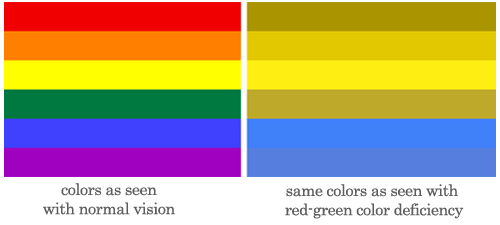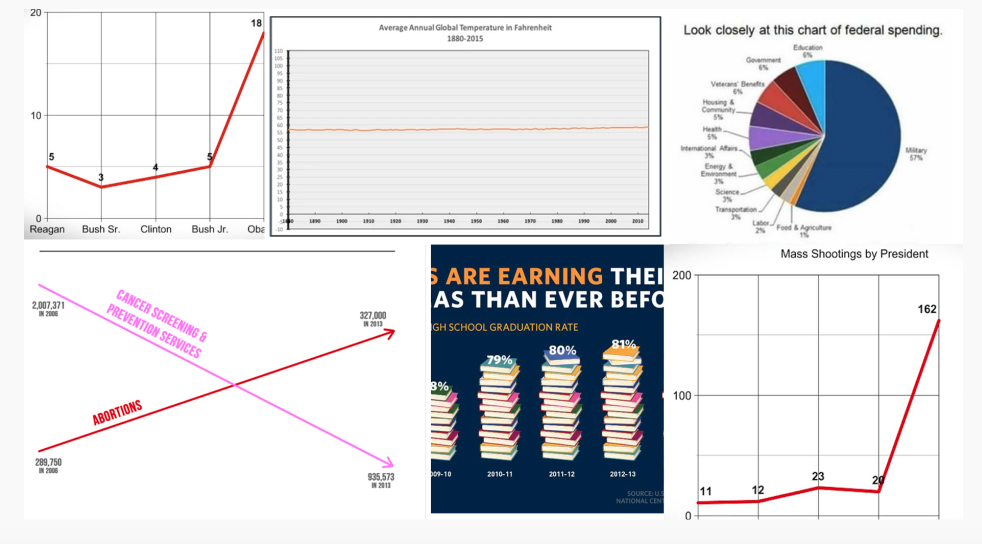It’s easy to consider digital rhetoric and writing in terms of always-advancing computer technologies. This isn’t inaccurate, and keeping our fingers on the pulse regarding the rhetorical affordances of new software makes for innovative digital writing, research, and pedagogy. At the same time, however, it’s helpful to remember that digital...
Lesson Plan: Visualizing The News As A Timeline
In today’s information economy, the abundance and production pace of information can make it difficult to follow news coverage of any given topic or event. Whether you are comparing different coverage of the same topic by more than one news source, tracking coverage of a topic in a single source...
Accessible Data Visualizations
Are you reading this blog post from computer screen or an screen reader? Did you need to adjust the font or text size, screen brightness, or filter the interface through a browser extension or rely on an app like Accessibility to access this information? In her entry on "Access" in Keywords...
When Data Visualization Goes Wrong and Numbers Mislead
Source image: The Most Misleading Charts of 2015 Fixed on Quartz To some students and readers, one of the rhetorical effects of data visualization is that the mere presence of a pie chart, graph, or timeline on a page confers “legitimacy” to an argument. At worse, this gesture attempts to...
Lesson Plan: Visualizing Difference with Tableau Public
In his much referenced TED Talk, David McCandless says that “if you start working with [data] and playing with it in a certain way, interesting things can appear and different patterns can be revealed” (5:57-6:14). And Virginia Kuhn argues that there are “two main uses for information visualization: discovery and...
Lesson Plan: Infographics – Digital, Visual Stories
[cs_content][cs_section parallax="false" separator_top_type="none" separator_top_height="50px" separator_top_angle_point="50" separator_bottom_type="none" separator_bottom_height="50px" separator_bottom_angle_point="50" style="margin: 0px;padding: 45px 0px;"][cs_row inner_container="true" marginless_columns="false" style="margin: 0px auto;padding: 0px;"][cs_column fade="false" fade_animation="in" fade_animation_offset="45px" fade_duration="750" type="1/1" style="padding: 0px;"][cs_text] [/cs_text][/cs_column][/cs_row][/cs_section][cs_section bg_color="hsl(0, 0%, 100%)" parallax="false" separator_top_type="none" separator_top_height="50px" separator_top_angle_point="50" separator_bottom_type="none" separator_bottom_height="50px" separator_bottom_angle_point="50" class="cs-ta-left" style="margin: 0px;padding: 0px 0px 45px;"][cs_row inner_container="true" marginless_columns="false" style="margin: 0px auto;padding: 0px;"][cs_column fade="false" fade_animation="in"...
Lesson Plan: Transforming Data Visualizations
[cs_content][cs_section bg_color="hsl(0, 0%, 100%)" parallax="false" class="cs-ta-left" style="margin: 0px;padding: 45px 0px;"][cs_row inner_container="true" marginless_columns="false" style="margin: 0px auto;padding: 0px;"][cs_column fade="false" fade_animation="in" fade_animation_offset="45px" fade_duration="750" type="2/3" style="padding: 0px;"][cs_text]Contemporary rhetorical theory privileges a view of rhetoric as dynamic, where texts circulate both spatially and temporally to myriad effects. For instance, in her influential article "Unframing Models...
Lesson Plan: Visualizing and Analyzing Terministic Screens with Voyant
[cs_content][cs_section parallax="false" separator_top_type="none" separator_top_height="50px" separator_top_angle_point="50" separator_bottom_type="none" separator_bottom_height="50px" separator_bottom_angle_point="50" style="margin: 0px;padding: 50px 0px 10px;"][cs_row inner_container="true" marginless_columns="false" style="margin: 0px auto;padding: 0px;"][cs_column fade="false" fade_animation="in" fade_animation_offset="45px" fade_duration="750" type="1/1" style="padding: 0px 0px 0px 50px;"][x_image type="none" src="http://www.dwrl.utexas.edu/wp-content/uploads/2017/02/Terministic-Screens.png" alt="Word cloud created with Voyant's Cirrus feature displaying essential terms from Kenneth Burke's Terministic Screens." link="false" href="#" title="" target=""...
(Re)visualizing Data
Team Data Visualization is proud to present a new set of lesson plans that we've designed to be as cohesive as the first. With a little planning, anyone can share a data visualization lesson plan with their students. Sarah Welsh and Sierra Mendez collaborated on two lesson plans. The first takes inspiration from...
Visualizing Data with Google Maps
[cs_content][cs_section parallax="false" style="margin: 0px;padding: 45px 0px;"][cs_row inner_container="true" marginless_columns="false" style="margin: 0px auto;padding: 0px;"][cs_column fade="false" fade_animation="in" fade_animation_offset="45px" fade_duration="750" type="1/1" style="padding: 0px;"][cs_text class="cs-ta-center"]Visualization: Sierra Mendez. Text: Amy Tuttle.[/cs_text][cs_text]It's hard to believe that at one time, map ownership was a privilege reserved for the wealthiest members of a society. But thanks to modern surveying...







